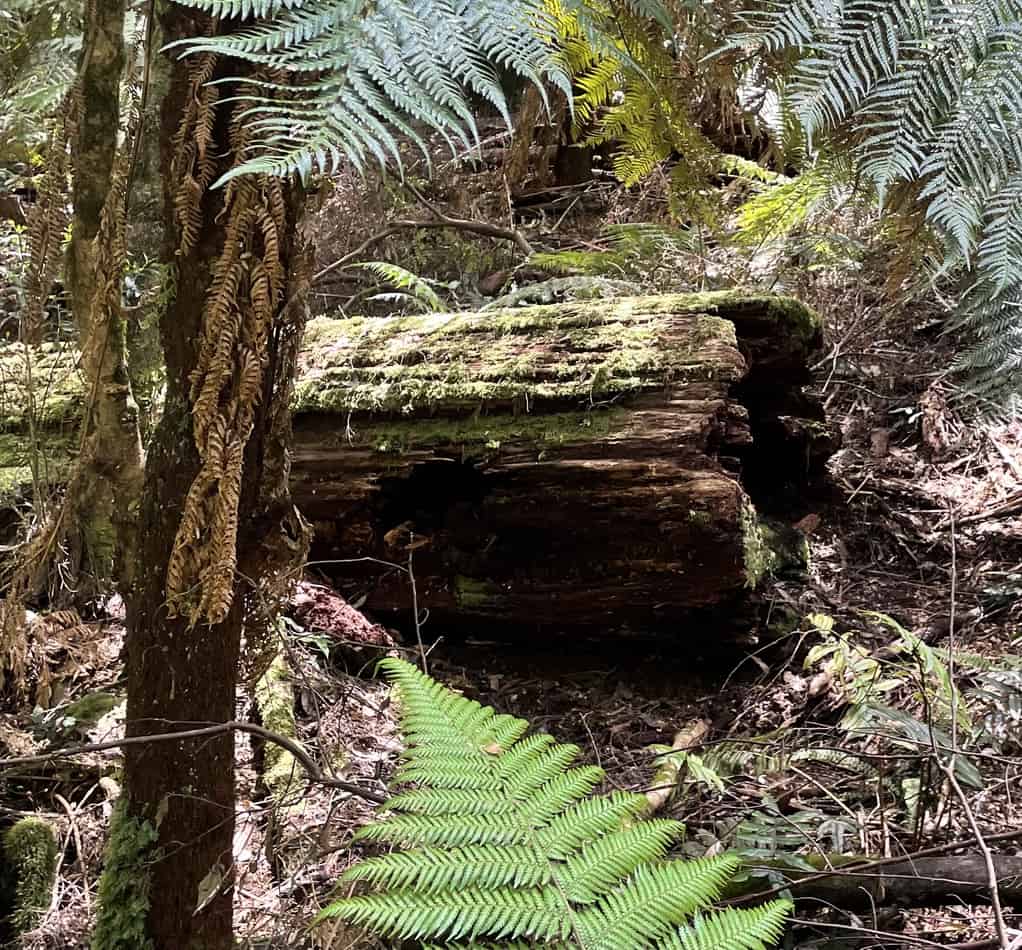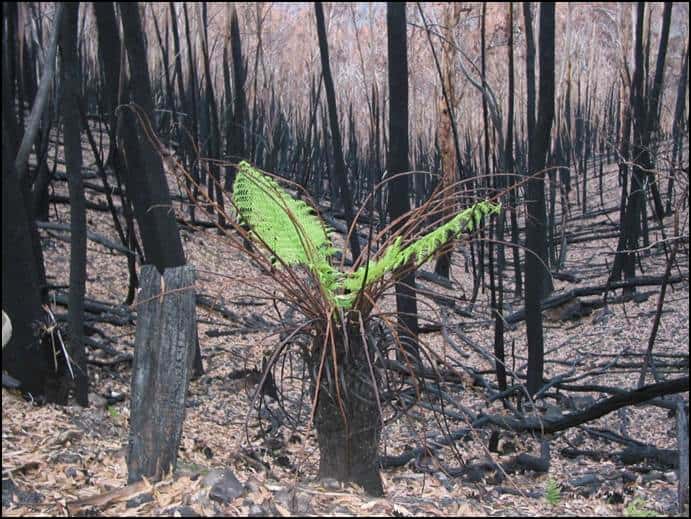The Forest Environment – Enviro Science Unit 1 for VCE Students
-
Forests
-
Human Impacts



Program Overview
Discover the forest environment, it’s structure, functions and natural processes by exploring:
- Changes occurring in the forest, including human-induced changes
- How forests are managed and conserved
- A clear felled logging coupe
- Protected Cool Temperate Rainforest
- Mountain Ash forest that has regenerated from the 1939 Black Friday bushfires
Student field work includes: - Observing, listing energy flows of plants and animals in eco-systems and the connections between them
- Observing and listing biotic and abiotic components of the ecosystem
- Comparing plant communities by drawing, labelling or describing (their choice) of specific forest characterists such as canopy species and preferred fire regimes for a Messate Forest, Mountain Ash Forest and a Cool Temperate Rainforest.
- Observing and then describing the process of change in plant species distribution and abundance after disturbance (succession) 1 year after disturbance, 12 – 15 years after disturbance 60 years after disturbance – and in maturity once it reached a balanced state (climax community) at 120 years and 500 years.
- Observing and describing human induced changes and it’s impact.
- Using quadrants in two sites to study plants to determine the differences within a Wet Forest environment.
- Observing adaptations for forest plants to cope with fire and other conditions such as drought.
- Discussing Australian animal adaptions to cope with changes to the environment.
- Comparing survey’s to assess growth, change or impact over time (1869 V 1887) of vegetation cover and discussing the causes of the vegetation loss.
- Discussing vegetation coverage since 1987- is it the same or had it worsened and why.
There is also discussion around aboriginal impacts on forests compared to European settlers and the impact of species such as cats and foxes.
Workbooks will be provided so you can make a copy for each student to use on the day to guide their forest investigation.
Inclusions and Notes
Equipment supplied by Gould League: Safety helmets worn by all participants; workbook and all tools required for fieldwork data collection.
Equipment needed: A chartered bus (which is required to remain with the group at all times). First aid kit, sun screen, insect repellent and PPE including hand sanitiser to kill viruses, bacteria and other micro organisations.
Please note that our Gould League educators will travel on your bus for the duration of your program time. We ask schools to ensure when booking coaches that 1 one seat is allocated for each group booked as they will provide commentary on the bus to students and guide the bus drivers. Please advise the Bookings Manager if there is no room on the coach for our educators, and travel fee of $0.88 per km will be added to your final invoice. This amount will vary according to the activities undertaken on the day which can vary due to local weather conditions. Maximum travel fee is $40. This covers the cost of one vehicle only as Gould League Educators will carpool.
Students needs to bring: Their own water and lunch (nude food is recommended), sunscreen, a clipboard, pencil, and a copy of the Gould League workbook (usually sent 14 days prior to excursion so copies can be made for students) to guide the forest investigation; bag to take away your rubbish.
Restrictions: This Gould League program is delivered in the Toolangi State Forest, in the North Central Fire District and does not operate on days with a Fire danger rating of Extreme and or Catastrophic. On rare occasions, programs may be postponed due to extreme weather predictions involving wind/storms. In both cases, these programs will be rescheduled at the earliest convenience of both parties.
Programs scheduled April to October may be subject to rain and or snow with expect temperatures at least 5 degrees colder than suburban Melbourne – so students must dress accordingly.
Curriculum Links
VCE Unit 1 Environmental Science (2022 – 2026)
How are Earth’s dynamic systems interconnected to support life?
Outcome 2
On completion of this unit the student should be able to describe the movement of energy and nutrients across Earth’s four interrelated systems, and analyse how dynamic interactions among biotic and abiotic components of selected local and regional ecosystems contribute to their capability to support life and sustain ecological integrity. nutrient exchange and environmental changes in ecosystems across Earth’s four systems over different time scales.
To achieve this outcome the student will draw on key knowledge outlined in Area of Study 1 and the related key science skills on pages 7 to 9 of the study design.
Key knowledge – Investigation of local ecosystems
- the range of biotic and abiotic components that determine the environmental conditions of varied habitat within aquatint’s and terrestrial ecosystems.
- interrelationships with ecological communities as represented by food changes, food webs, energy and biomass pyramids
Key knowledge – Earth systems thinking
- natural interactions between Earth’s four systems – the atmosphere, biosphere, hydrosphere and lithosphere – that support and are affected by the movement of energy and matter within and between local and global ecosystems
- systems thinking as a way of exploring relationships in environmental systems by identifying inputs, outputs, components and processes that may be visible or invisible to the human eye, including representation of a local and regional environmental system.
Unit 2: How do Earth’s systems change over time?
- techniques for measuring and monitoring changes
- the effects of environmental changes on Earth’s systems that relate to the survival of living things, including a focus on at least one example from each of the following time scales:
– short term (seconds to years): daily, diurnal, nocturnal, circadian, seasonal, tidal, and El Niño-Southern
Oscillation events
– medium term (multiple years to hundreds of years): solar output cycles, glacial melting, vegetation
succession, land cover changes, and desertification
– long term (thousands to millions of years): plate tectonics, evolutionary mechanisms, Milankovitch
cycles, thermohaline circulation, mass extinction of species, and geomagnetic reversals
- the effects of unpredictable and/or abrupt environmental changes resulting in localised extinction and speciation, or ecosystem shock, with reference to at least one example from the following events: floods, droughts, fire, earthquake, volcanic activity, the emergence of new diseases and/or rapid erosion events.
This program also covers many aspects of the key geographical concepts.
VCE Study Design extracts reproduced by permission, © VCAA. VCE is a registered trademark of the VCAA. The VCAA does not endorse or make any warranties regarding this study resource. Current VCE Study Designs, past exams and related content can be accessed directly at www.vcaa.vic.edu.au
